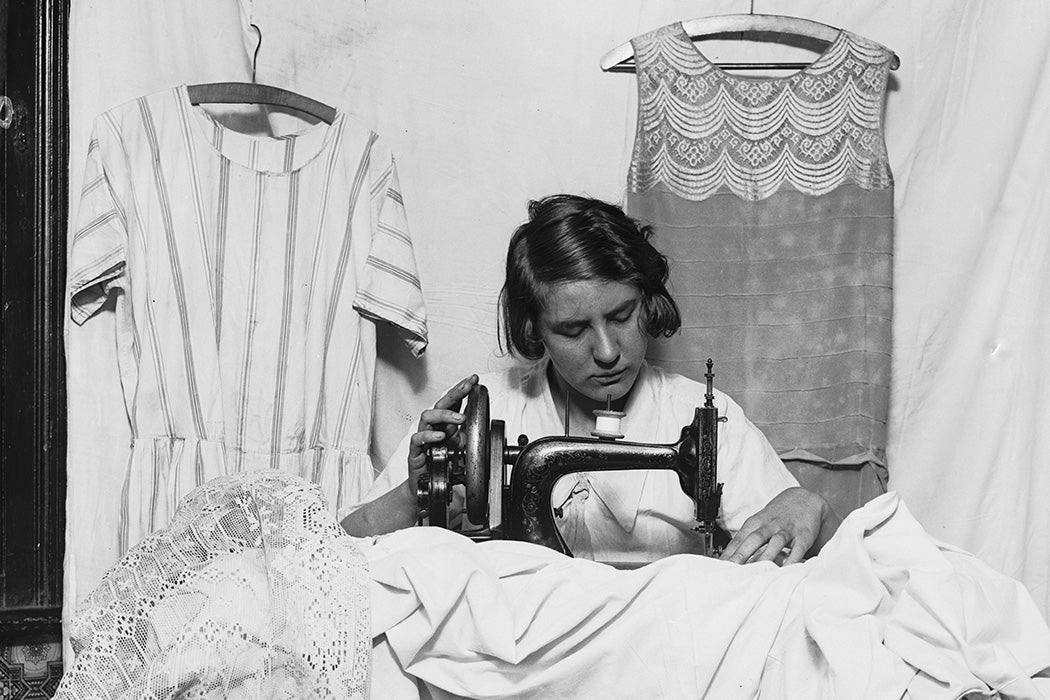How well do your clothes fit? In the nineteenth century and earlier, the creation of well-fitting clothes relied on expert women dressmakers. Now, many of us can make our own clothing thanks to the proliferation of the sewing machine and graded patterns. But the democratization of fashion came at the expense of women for whom dressmaking offered an unprecedented chance at professionalism and power.
Historian Wendy Gamber tracks the move from sex-segregated dressmaking to a more democratic, accessible form of sewing—one that eroded the power and expertise once enjoyed by expert female dressmakers—during the mid-nineteenth and early twentieth centuries.
Before that time, dressmakers ruled supreme over the world of women’s clothing. These women dominated their sphere, and they enjoyed relatively high compensation as well as a possible path to financial and professional independence with their own businesses marketed toward women in search of custom garments. Women were identified so strongly with dressmaking that many assumed it was skill that came along with two X chromosomes.
But as Gamber shows, that division of labor was toppled by men who “democratized” fashion while stripping the women who had once dominated it of their markets, their skills, and their authority.
“Condescending at best, deprecating at worst,” writes Gamber, a variety of inventors, many from the male-oriented tailor trade, “sought to ‘reduce’ the feminine art of dressmaking to a science” during the nineteenth century. These innovators created a variety of inventions and systems designed to make dressmaking easier and more efficient and to reach a broader market.
Those attempts had a cascade of effects. They superimposed tailoring methods specific to men’s clothing on women’s garments in an attempt to create silhouettes that could only be achieved through bespoke techniques that relied on careful cutting, pinning, and construction. The new systems couldn’t replicate the services of a professional dressmaker, producing amateurish results.
But despite their inadequacy, the “scientific” dressmaking systems hurt dressmakers. Since these new systems needed buyers, they were marketed to both professionals and amateurs, blurring those boundaries and linking dressmaking to domestic labor, not skilled work. They challenged the longstanding authority of women who had worked hard to acquire their artisanal skills. And those women who did create similar systems couldn’t compete with the industrial and marketing might of men who had long since been welcomed into the mostly-male world of business and commerce.
Weekly Newsletter
Then came the death blow: paper patterns that were “graded” to fit different sizes. Patterns were already widely available in women’s magazines, Gamber notes, but women were expected to do their own calculations and alterations to make them fit. In 1867, however, Ebenezer Butterick invented the graded pattern, and a variety of other men followed suit.
“The same development that heralded ‘democracy’ for the consumer threatened penury for the dressmaker,” writes Gamber—and thus waned the authority and ascendance of these independent women. Dressmakers no longer dominate the world of women’s clothing, and the expertise of generations has been subsumed by the world of businessmen.
Support JSTOR Daily! Join our new membership program on Patreon today.







